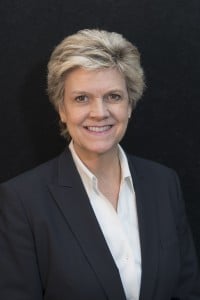Providing women with equal opportunities to pursue and excel in STEM careers narrows the gender pay gap, prevents biases and enhances women’s economic security, ensuring a diverse and talented STEM workforce.
In a recently published research study, undertaken by Dr Catherine Hill and Christianne Corbett Andresse St. Rose, Ed.D, data showed that no matter at which institution such research had been undertaken, (highlighted in various articles in Women in Science), experts found corresponding issues and challenges impacting female scientists across STEM.
As data regarding this subject could only be found for the United States (US), it would be safe to say that the same challenges, if not more so, faced female scientists on the African continent. These include socio-economic factors, lack of proper education and information, mentoring and familial obligations inherently part of the African patriarchal system.
Of all STEM workers in the US, 73% were male. In 1970, only 8% of STEM workers were women. However by 2019, the STEM proportion had increased to 27%.
The American Association of University Women (AAUW) *see below report showed that more females were awarded bachelor’s degrees than men 58%/42%), but in STEM, this figure showed only 36% successful degrees obtained by women, while 64% of American men were awarded their degrees. It proved that even in First-World countries, girls and women are limited by their training and options to enter the STEM fields in post-secondary education. Men vastly outnumber female STEM majors at college, especially in areas where the highest income jobs are found – computer science and engineering
While many young women graduate from high school with the necessary skills to major in STEM, the National Science Board and the National Academy of Sciences in the States found that the culture of academic departments in colleges and universities, did not favour women.
Jane Margolis and Allan Fisher’s research on women in computer science at Carnegie Mellon University found departmental culture to play a major role in decisions of female STEM students to remain in or leave these majors. These researchers demonstrated that small changes in recruitment, admissions and course work, while creating and promoting opportunities for positive interactions among students and between students and faculty staff, could make a big difference in students’ experiences.

BLURB
“If you feel like you don’t fit or belong—for whatever reasons—your satisfaction is bound to be lower because not only is it human nature to want to belong, it is crucial for getting tenure” — Cathy Trower – research director Collaborative on Academic Careers in Higher Education (COACHE), Harvard University.
Despite female representation increasing among STEM disciplines, women remain underrepresented among tenured faculty. Across the fields of physics, engineering and computer science, female involvement are minimal at every level, urgently calling for positive interventions to attract and retain female faculty is critical.
Various suggestions had been made in the Hill and St Rose research paper to improve the situation. They found that for progress to occur in STEM fields, teachers and academic leaders should be selected from the entire pool of talented and qualified individuals. Also, female faculty could assist to recruit and retain female students from other underrepresented groups. With job satisfaction showing up as key to retention, women and people of colour are more likely than white men to report being less satisfied with the academic workplace.
Other areas this report highlighted the necessity for implicit association tests on gender and science and competence and likability for women in “male” professions.
Note: This research project had been undertaken for The American Association of University Women (AAUW), America’s leading organisation promoting equity and education for women and girls.










